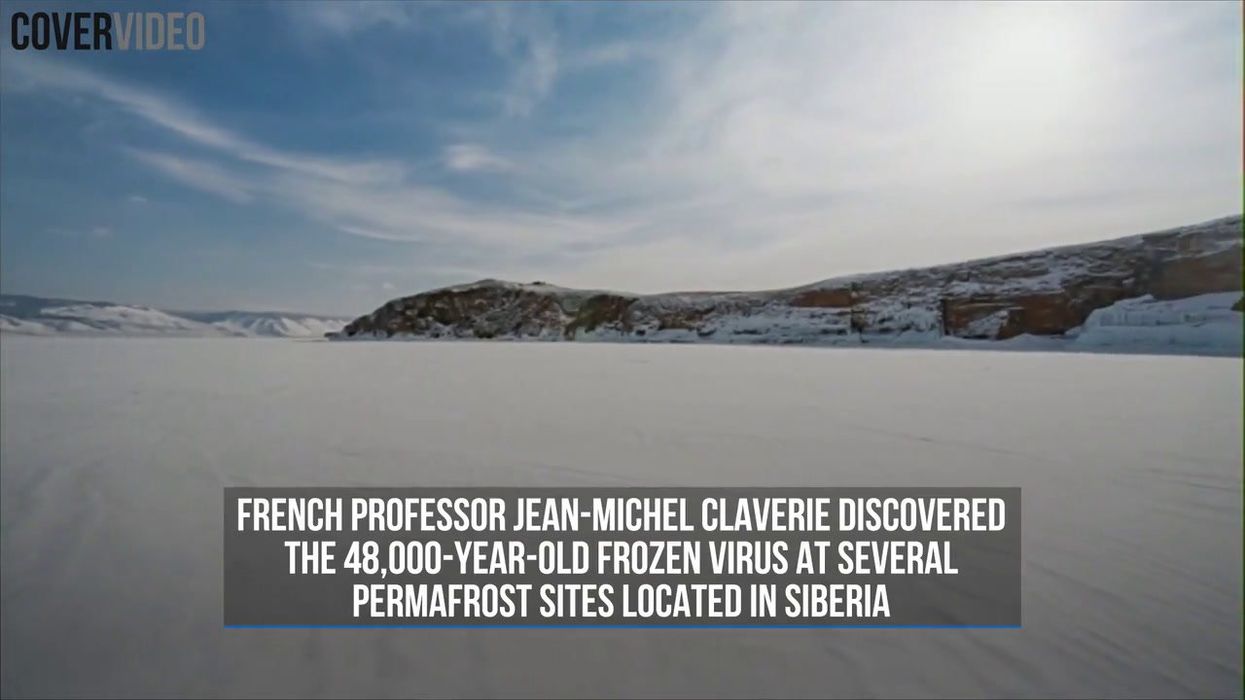Harriet Brewis
Feb 25, 2024
Scientists Revive 'Zombie' Virus Frozen in Permafrost for Almost 50,000 Years
Cover Media - Shareable / VideoElephant
Among the cataclysmic effects of global warming, not many of us have considered a potential rise in cancer cases.
And yet, thawing permafrost in the Arctic could provoke just that.
The layer, which keeps the ground frozen in the polar region all year round, traps in a variety of gases, preventing them from being emitted into the atmosphere.
These include the greenhouse gas methane which, when released, accelerates climate change.
However, in a new paper, published in the journal Earth-Science Reviews, scientists are warning of another dangerous gas lurking beneath the icy ground: radon.
And yes, this colourless, odourless gas has the potential to cause cancer.
It is formed by the radioactive decay of the small amounts of uranium that occur naturally in all rocks and soils.
This common process occurs in the ground under our homes and, because of the way we heat and ventilate buildings, some radon gets inside the buildings through our floors, as the UK Health Security Agency (HSA) notes.
Breathing in high levels of radon over long periods can damage the sensitive cells of our lungs, thereby increasing the risk of developing lung cancer.
Radon causes about 1,000 lung cancer deaths in the UK every year, and is the second-leading cause of lung cancer in the US – killing 21,000 people annually – according to the country's Environmental Protection Agency.
And thanks to global warming, the problem only looks set to get worse.
Radon - how it affects youyoutu.be
For their study, a team of scientists analysed previous studies on permafrost regions, including Alaska and the mountains of Harbin, a province in northeastern China.
They concluded that the deterioration of the permafrost does, indeed, have the potential to allow radon to migrate into homes and workplaces.
However, they stressed that the current research on radon migration in permafrost regions is "grossly inadequate”.
Part of the problem is that permafrost doesn’t thaw in a uniform way, from the top down. Instead, it melts unevenly, creating cracks and crevices.
Furthermore, seismic activity, which is common in Alaska, can also create new fault lines through which radon can travel.
"If you know where the uranium deposits were, you wouldn't be able to draw a straight line up with a ruler,” Art Nash, an energy specialist at the University of Alaska Fairbanks Cooperative Extension Service, told Live Science.
“With the nonuniform melting, you can't really tell where it's going to finally break through."
In other words, it's hard to pinpoint where radon hotspots might crop up.

Another big question mark surrounds how radon will interact with the other gases trapped under the permafrost.
Of these, the biggest concern is methane, and its potential to rapidly accelerate climate change if released in large quantities.
However, Nash also pointed towards methylmercury – a chemical that can accumulate in water and animal tissues and disrupt the nervous system.
"How will those gases compete for the limited routes which will open up in the permafrost?" Nash asked.
Unfortunately, such questions remain unanswered but, more optimistically, this could all change.
Permafrost is finally gaining more attention as the climate warms, so we should start to see some improvement in the research.
"Universities and government agencies are spending more money on it now that this has become a prevalent issue," Paul Goodfellow, an environmental program specialist at the Alaska Division of Geological & Geophysical Surveys, also told Live Science.
"Hopefully, over the next five to 10 years, we'll be seeing more data coming out."
We just hope it won’t be too late.
Sign up for our free Indy100 weekly newsletter
Have your say in our news democracy. Click the upvote icon at the top of the page to help raise this article through the indy100 rankings
Top 100
The Conversation (0)














